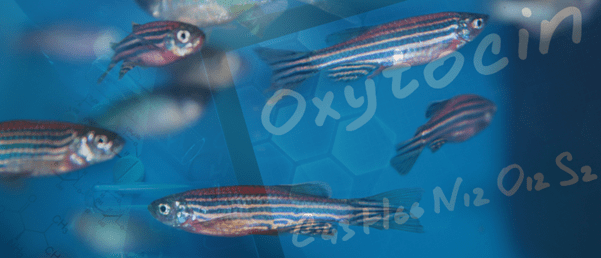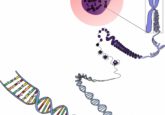Emotional contagion: the evolutionarily conserved role of oxytocin

A new study delves into the evolutionary conservation of emotional contagion and the role oxytocin plays in empathy.
Researchers from the Instituto Gulbenkian de Ciência (Oeiras, Portugal) have confirmed that, like humans, fish rely on the neurohormone oxytocin and its associated receptors to mimic the emotions of other fish. [1] This discovery provides evidence that emotional contagion, the tendency to align emotions with others, has been evolutionarily conserved and may offer an insight into social behaviors.
Emotional contagion refers to an organism’s sensitivity to their conspecifics’ emotions, whether they be happy or stressed. In humans and other mammals, previous research has highlighted the important role that oxytocin plays in this phenomenon. The current research team wanted to explore whether fish, the most ancient group of vertebrates, also utilize oxytocin to mimic emotions.
To do this, they established that zebrafish showed distressed behavior when in the vicinity of a distressed shoal. The distressed shoal – called ‘demonstrator’ fish – was in an adjacent tank to the zebrafish under observation. The demonstrator fish tank was injected with schreckstoff, a chemical known to produce a fear response. This resulted in fear behavior, characterized as a zigzag swimming pattern followed by freezing. The control zebrafish in the adjacent tank adopted the same freezing behavior. [2]
 Researchers dissscover broadly neutralizing antibody against snake neurotoxins
Researchers dissscover broadly neutralizing antibody against snake neurotoxins
Researchers have found a new human monoclonal antibody that can neutralize snake neurotoxins across species and geographies.
However, mutant zebrafish genetically altered to silence oxytocin production did not display the same fear behaviors that were displayed by control zebrafish when encountering a distressed shoal. Oxytocin, therefore, is an important molecule for spreading emotions, such as fear. The researchers then injected the mutant zebrafish with oxytocin and ran the experiment again. This time, the mutant zebrafish did display the freezing behavior.
It’s important to note that the fish were recognizing fear behavior as opposed to just copying it. The researchers set up a tank with a video of a zebrafish swimming normally playing on one end and another video showing a distressed fish on the other end. The control zebrafish adopted the fear behavior and gravitated toward the end of the tank showing the distressed fish. The mutant, however, did not display fear behaviors and swam around the tank freely, indicating that the zebrafish that couldn’t produce oxytocin didn’t recognize distressing behavior.
Although approaching a distressed shoal in nature could seem counterintuitive as it could mean a predator is nearby, the research team commented that “being approached by conspecifics could help the group recover from stress.” These behaviors are well documented as well as regulated by oxytocin in mammals.
When it comes to emotional contagion, humans and fish share more than just oxytocin; we also use equivalent brain regions to process emotions, making zebrafish a prime model for understanding social contagion in humans. This understanding could have implications for personal social behaviors as well as group behaviors that underly public health, politics and marketing.





